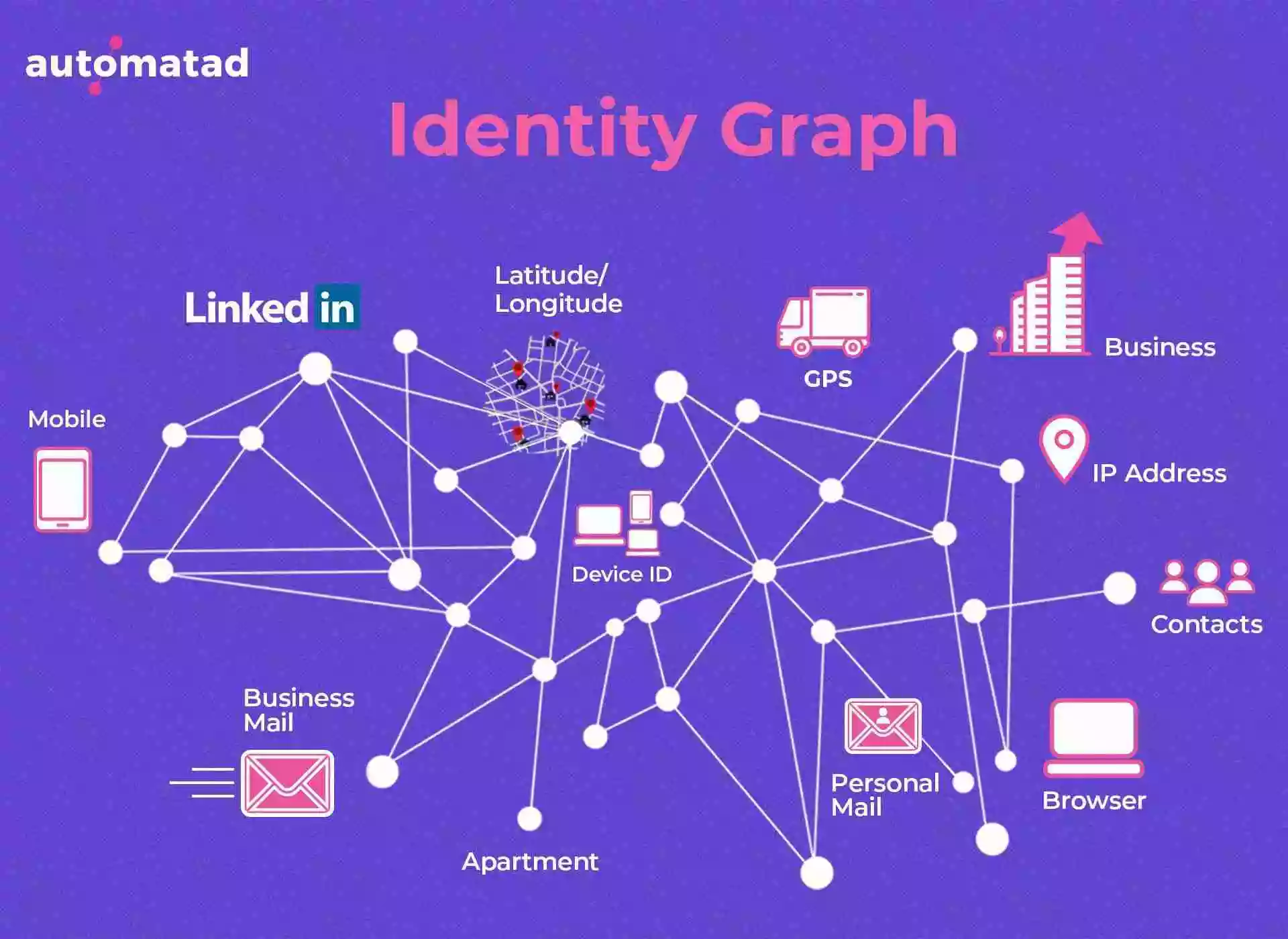As Google has made it evident, third-party cookies will soon become a relic of the past. Amidst growing privacy concerns and regulatory scrutiny, Google is determined to completely phase out support for third-party cookies by 2022. Thereby, the entire ad-tech industry is busy figuring out how to stay afloat once the cookie is gone.
“Anything programmatic is essentially the third party. In fact, nearly 85% of the top 1,000 sites have cookies set by a third party, which highlights its prevalence.”
– Cory Munchbach, Chief Operating Officer, BlueConic (Src)
As a publisher, you must be wondering how you would optimally monetize your inventory without third-party cookies. While the answer to this problem is not simple, the deprecation of cookies does not necessarily mean the demise of data-driven advertising. Even without cookies, you still have access to a wide variety of audience data in the form of contextual data, identity graphs, first-party data, amongst others.
Here’s a brief overview of the five different types of cookieless data for publishers (alternative to cookies) that they can utilize in the post-cookie world.
Table of Contents
First-Party Data

First-party data refers to the information that has been directly collected from your audience using their actions, behaviors, and interests on your website. It is highly valuable owing to the following reasons:
- It is a consented form of data where your users have voluntarily provided the information to you.
- It is extremely pertinent to your business since it involves data collected directly from your website’s audience.
- It is more accurate than third-party data which usually gets aggregated from miscellaneous data sets. Collected directly from the source the accuracy of first-party data is guaranteed.
- The risk of privacy-policy violations is minimal. Since you directly ask your users for their consent to share their data with you and also inform them regarding how the data will be used, it remains privacy compliant.
- It encourages transparency and stronger relationships with users. Users get a clear picture that the data collected by you will stay with you.
Different types of first-party data you can collect, include ad engagements, clicks on your page, search queries, forum posts, comments, and page metadata to name a few. Although a difficult task these can be further used to create a macro perspective of users when used in combination with other similar forms of aggregate data.
“From a brand perspective, we have been using first-party data for a long time. As a brand, start understanding your various consumer profiles, start building them, and mapping them out. It will be relatively easy to match them with similar aggregate data sets, audience cohorts, and [similar solutions] that media providers, publishers, and DMPs will offer.”
– Rafael Aquino, Programmatic Trader, L’Oréal
Second-Party Data

Second-party data essentially refers to the first-party data of another publisher. Since it has been collected in the same way that first-party data gets collected, it provides the same accuracy that first-party data would provide. First-party data is also limited only to your site’s reach. Whereas, second-party data can come from various alliances between publishers, as well as ad tech vendors, bringing the necessary scale to the process.
For example, consider that you have a website that sells sports goods. While your in-house first-party data strategy is working fine, you can improve your monetization capabilities by forming relationships with other publishers that deal with sports-related content.
The first-party data of these other publishers will now serve as your second-party data, allowing you to enable your advertisers in reaching more users and fulfilling their campaign goals via ad targeting. An ideal execution should increase scale, provide better control over data, and shift the power back to the hands of publishers.
You can also generate revenue by sharing your first-party data with a sports-centric publisher who might require it. It will now become the second-party data of the publisher who acquired it from you. The choice is yours. However, you need to make sure that such data is privacy-compliant. With regulatory bodies tightening the noose and new rules still being developed, this needs to be done carefully.
The latest CPRA guidelines make no distinction between shared data and sold data. To stay out of trouble, you need to ensure that the second-party data obtained by you or the first-party data that you have shared with another publisher, has all been collected using privacy-compliant methods (legitimate consent forms).
On the other hand, if Google’s predictions are to be taken seriously, as much as 60% of ad revenue in programmatic will decline with the death of third-party cookies.
“But in one of the first empirical studies of the impacts of behaviorally targeted advertising on online publishers’ revenue, researchers at the University of Minnesota, University of California, Irvine, and Carnegie Mellon University suggest publishers only get about 4% more revenue for an ad impression that has a cookie enabled than for one that doesn’t. The study tracked millions of ad transactions at a large U.S. media company over the course of one week.”
Hence, publishers must start evaluating working with other publishers to facilitate data collaboration and create data consortiums to tackle this void that has been created – given the collected data is stored securely and merged responsibly.
Identity Graphs

Data is never enough on its own. It usually makes no sense, unless it has been sorted to provide valuable insights regarding the user. Different data sets must be compared to each other to derive insights and postulate a clearer picture of the user.
This methodology is known as building individual consumer identities. The process of creating identities involves linking various data points along with first-party data to create a single anonymous profile. The resultant profile that is created is known as an identity graph. The insights drawn from ID graphs regarding an individual user aids in the delivery of personalized ads.
Depending on the data that has been linked to the profile, these graphs can be altered and can enable you to better understand your website visitors. As explained in the first entry by Rafael Aquino, you must shift to an identity-intrinsic strategy upon the phasing out of third-party cookies.
Nonetheless, in the post-cookie environment, the way data sets were linked previously will need to be altered. Similarly, changes need to be made to the data inputs that were considered prevalent during the time of third-party cookies. This should serve as a great opportunity for you to create a robust foundation for your future identity graphs. Refer to our article on the importance of identity graphs and why you need them for a clearer understanding of this type of cookieless data.
Contextual Data

Third-party cookies make use of visitors’ behavior on the website to create a profile. Contextual data, on the other hand, helps in targeting by relying on the environment in which your user is browsing. Keywords and topics relevant to your website’s content are targeted to serve ads on your website.
Publishers can also implement an additional layer to improve the relevance of ads served, making them contextually apropos and granular with the help of Google Ad Manager key-value targeting. This also ensures an improved user experience.
However, there are drawbacks to contextual advertising. Contextual ads, although offer relevance, do not score that high when it comes to personalization. Contextual advertising is not as precise as behavioral advertising, and hence while it remains prevalent it will also target users who are not specifically interested in the ad.
You might experience abundant impressions, but engagement or conversions are likely to be low, resulting in lesser eCPM. Regardless, you should not discard it entirely and rather evaluate how contextual data fits into this changing landscape devoid of third-party cookies.
Cohorts/FLoC

Cohort-based data is an emerging norm that has been heavily touted by companies like Google, to be the next big thing in audience targeting. Google’s preliminary tests involving cohort-based advertising have shown optimistic results, making it an exciting new prospect.
Theoretically, cohorts assure privacy, since individual users are grouped anonymously under Cohort IDs based on their online behavior and interests. The assigning of Cohort IDs takes place in the Google Chrome browser, with the user information also being stored locally.
However, this methodology, especially Google’s FLoCs or Federated Learning of Cohorts is still quite new. Therefore, the industry as a whole is not yet entirely convinced as to how effective it might be. Publishers further have doubts regarding its efficacy and how it will help improve their monetization capabilities.
“I imagine every publisher is asking how this will impact their CPMs and margins — those are unanswered, important questions.”
– Patrick O’Leary, Founder & CEO, Boostr
Privacy tests by Mozilla on Google’s FLoC have also revealed significant loopholes in its privacy properties. These need to be addressed immediately before FLoC can be considered as a reliable and privacy-compliant alternative to third-party cookies.
What’s Next?
While third-party cookies have been the cornerstone of data-driven advertising for many years, you need to embrace the change and stay ahead of the curve. Leveraging cookieless data will not only ensure the safety of your advertising business but also respect user privacy when implemented correctly.
The upcoming future promises various innovations and creative approaches to tackle the cookieless scenario, and new solutions are being developed as we speak. However, since such developments are still in their infancy, a lot of it would prove to be trial and error.
We hope that this article has been able to adequately provide you with an overview of the five different types of cookieless data for publishers that you can leverage in a post-cookie environment. However, if you still have lingering doubts, please feel free to leave a comment and we’d be happy to answer.























